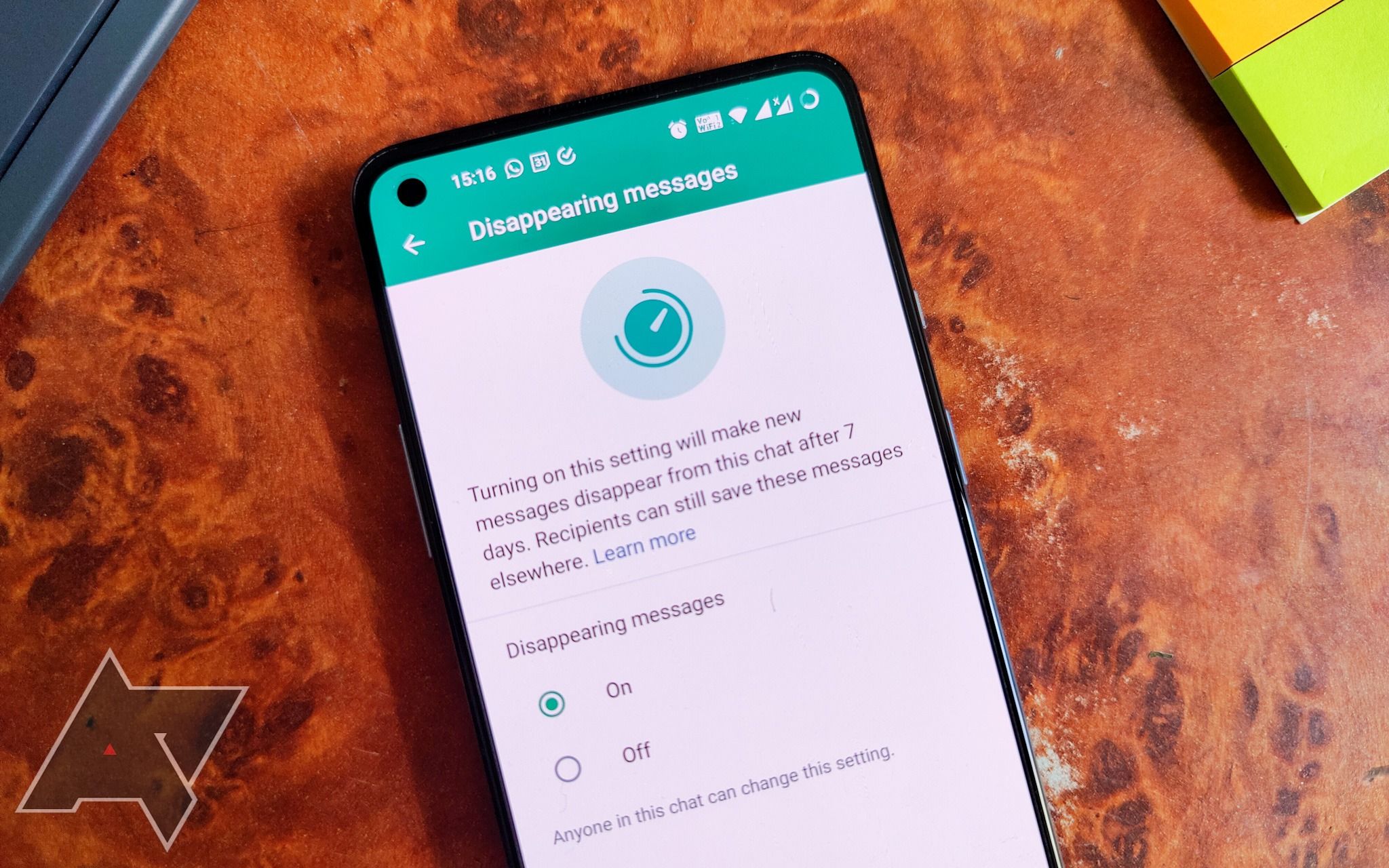Despite several recent controversies questioning its integrity, WhatsApp continues to be surprisingly privacy-conscious, with end-to-end encryption available by default across all chats. The messaging app even took a step further in that direction when it introduced disappearing messages for everyone late last year. With this new ephemeral option, it's even easier to shield your most private conversations and media. It seems that not a lot of people use disappearing messages in WhatsApp yet, perhaps because they don't know it exists. Here, we’ll tell you how to enable it and what precautions you must take to ensure your chats remain private.
How to enable disappearing messages
Disappearing messages aren’t something you can enable for everyone in one go; you have to do it individually for each contact or group. This means only new messages exchanged after you turn the setting on will be impacted, while your older conversations and other recipients aren’t affected. Here's how you enable it:
- Tap on the contact’s name, available at the top of their chat thread.
- Select Disappearing messages. If you’re visiting this section for the first time, WhatsApp shows a little introduction card before you can proceed.
- After dismissing that, select the On option.
And that’s it. When you return to the chat window, both the recipient and you will see a short message notifying you of the change. Any message sent after this will automatically vanish from the chat after the seven-day timer runs out.
You can easily identify the contacts with ephemeral chats enabled as they'll have a timer icon that appears over their profile photo. The same steps also work for turning off disappearing messages when you’re done with your top-secret chit-chat.
Functionality is limited
WhatsApp is a few years behind Signal in adding this feature, so it quite naturally comes with a few limitations. There’s currently no way to change the default seven-day timer to a time limit of your choice. This is completely customizable on Signal, while Telegram gives you three options: 24 hours, one week, and one month. Hopefully, WhatsApp will add more time options in a future update.
It’s also a mild inconvenience to go to the recipient’s profile each time you want to enable or disable disappearing chats. I would’ve preferred it if WhatsApp included a shortcut for those who’d use these vanishing messages only once in a while, like by long-pressing the send button to bring up a context menu for specific messages only.
Play it safe
It’s pretty obvious that you’ll be using disappearing messages to have conversations that are more sensitive than others. However, there are ways that your chats could still be saved on the receiver’s end, defeating the feature’s very purpose — and WhatsApp does caution about that on the settings page.
For example, if your ephemeral message is quoted in a reply or is forwarded to a different chat with disappearing messages turned off, those instances may remain even after the 7-day window. WhatsApp separately notes that these messages are also backed up just like a normal message and stay there until the user restores those chats to a new device. And considering WhatsApp backups aren’t currently encrypted, this isn’t very reassuring.
Moreover, WhatsApp erases these messages only from the chat thread, which means any media downloaded on the recipient’s phone will still be accessible. And you can’t keep people from taking screenshots or copying the text. Telegram’s Secret Chat feature notifies you when someone screenshots your fleeting messages, but that has its own limitations — in any case, it isn’t available on WhatsApp yet.
Despite the list of ifs and buts, it’s nice to at least have the option for when you need to use it. The rule of thumb here is that you enable disappearing messages on WhatsApp only for the contacts you can trust and avoid sending any kind of sensitive information unless you’re double sure. Like every other piece of tech out there, WhatsApp isn’t foolproof, so proceed with caution.

